Ever wonder how to make hard kombucha (i.e. kombucha with more alcohol in it)? We’re breaking down the basics to alcoholic kombucha. It’s easier than you would think!
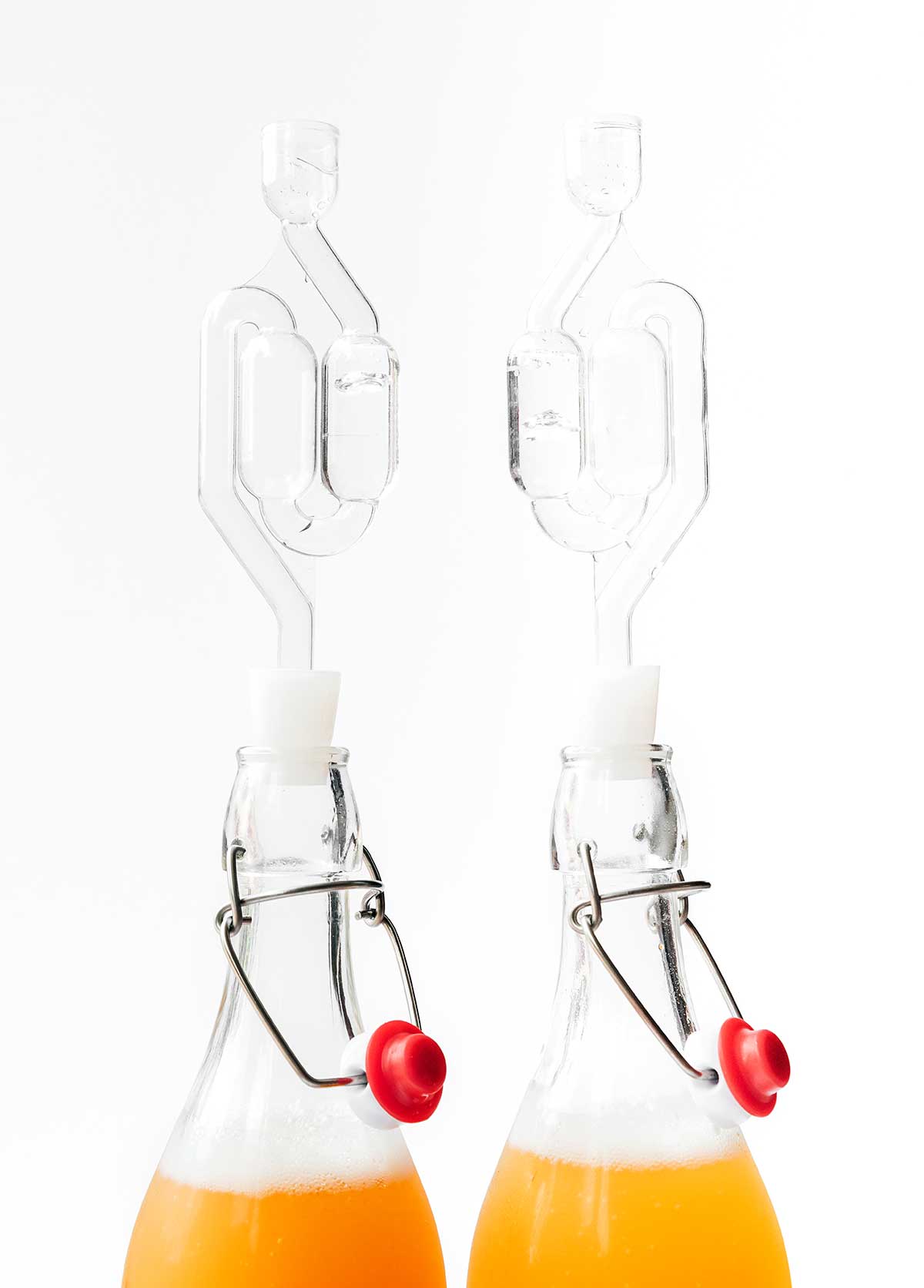
The basics of hard kombucha
Kombucha naturally contains some alcohol (about 0.5%). This is due to the reaction between the naturally occurring yeast in the kombucha, which produces trace amounts of ethanol (alcohol).
Typical kombucha yeast strains do not produce much alcohol on their own, so what do you do if you want to increase the amount of alcohol in your kombucha? Add a different kind of yeast!
By adding a different strain of yeast, such as champagne yeast, to your kombucha, you can make a hard kombucha beverage with a higher ABV (alcohol by volume), around 5%!
After much experimentation (and years of brewing non-alcoholic kombucha to help guide me), I’ve finally landed on the method of brewing hard kombucha that’s both easy and reliable. Let’s brew!
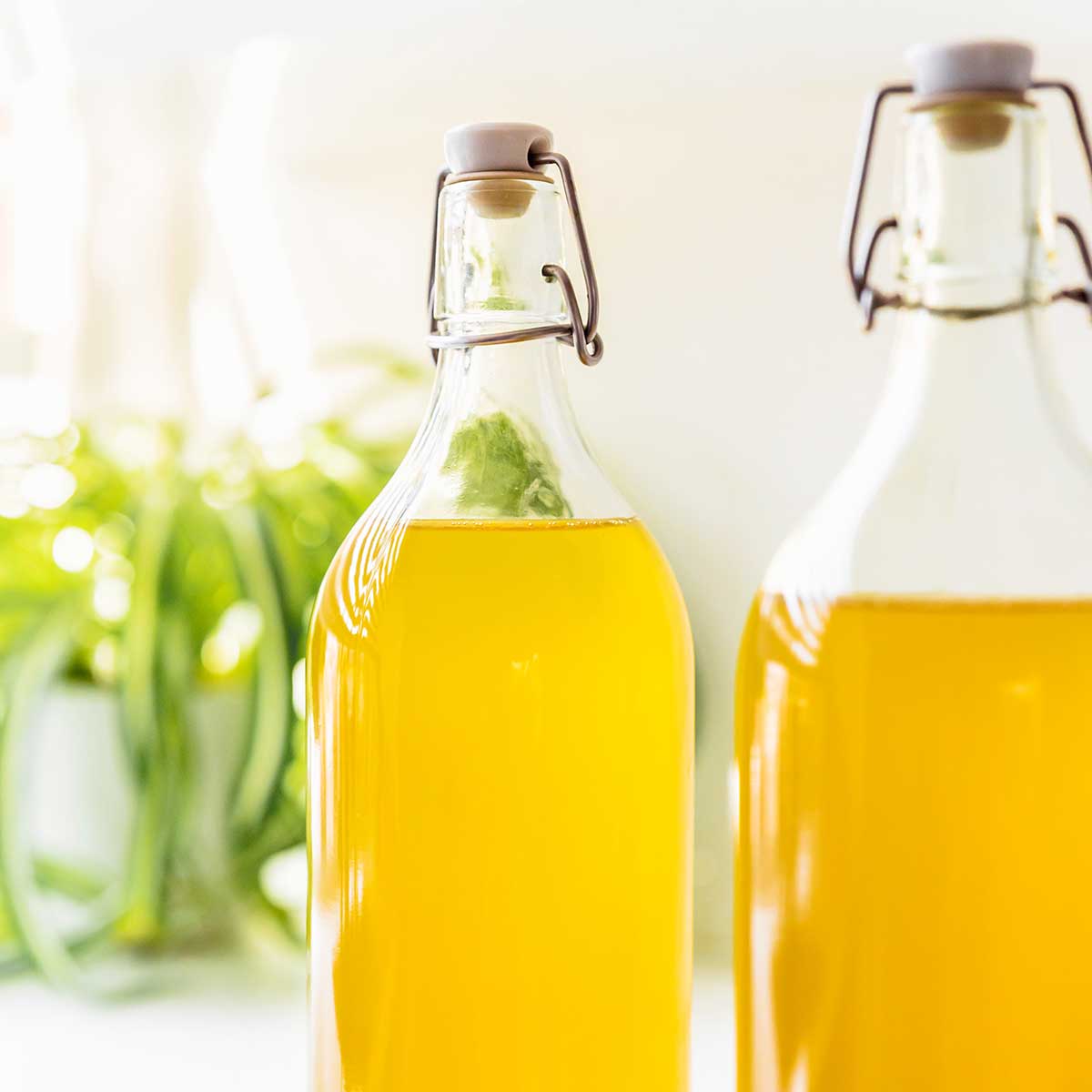
Main Ingredients & Supplies needed for alcoholic kombucha
Kombucha from a first fermentation
First up, you’ll need some kombucha! Take your batch of kombucha straight from the first fermentation to make hard buch. (Here’s how to make kombucha in the first fermentation.) You can use kombucha made from green or black tea here.
Yeast
Adding an additional strain of yeast (different from the kombucha yeast) will help drive up the alcohol content of your kombucha. The type of yeast you choose to use will impact the finished flavor. Some options include:
- Champagne yeast (like this EC-1118 dry wine yeast), which gives a distinctly champagne flavor to your hard kombucha
- Ale yeast (like this SafAle US-05), which has a more neutral flavor
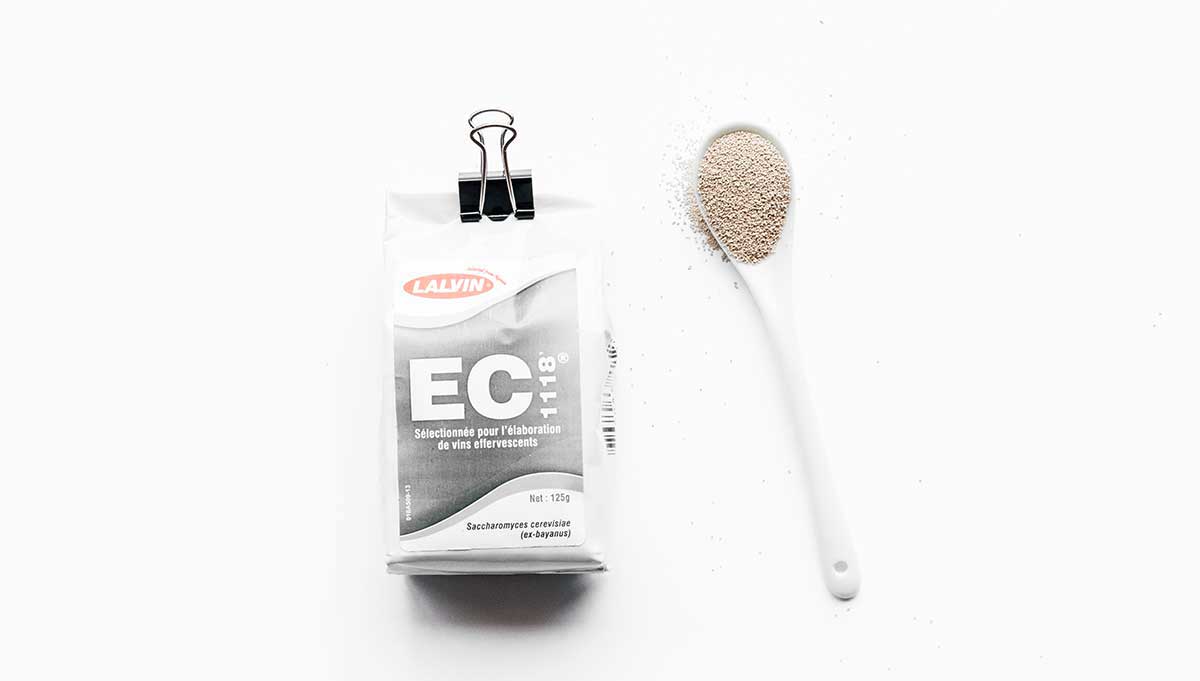
Airlock
The final extra piece of gear you’ll need to brew hard kombucha are airlocks. These effectively let carbonation escape without letting oxygen in.
“But doesn’t kombucha need oxygen?” Good question! When making kombucha in the first fermentation, the bacteria need oxygen to ferment properly. But once the kombucha is finished and you’re ready to booze it up, you’ll want to prevent oxygen from getting to the bacteria so that the bacteria don’t eat the alcohol you’re making! (More on the relationship between bacteria and alcohol in kombucha here.)
A lid won’t work here because you need to allow for air to leave the bottle!
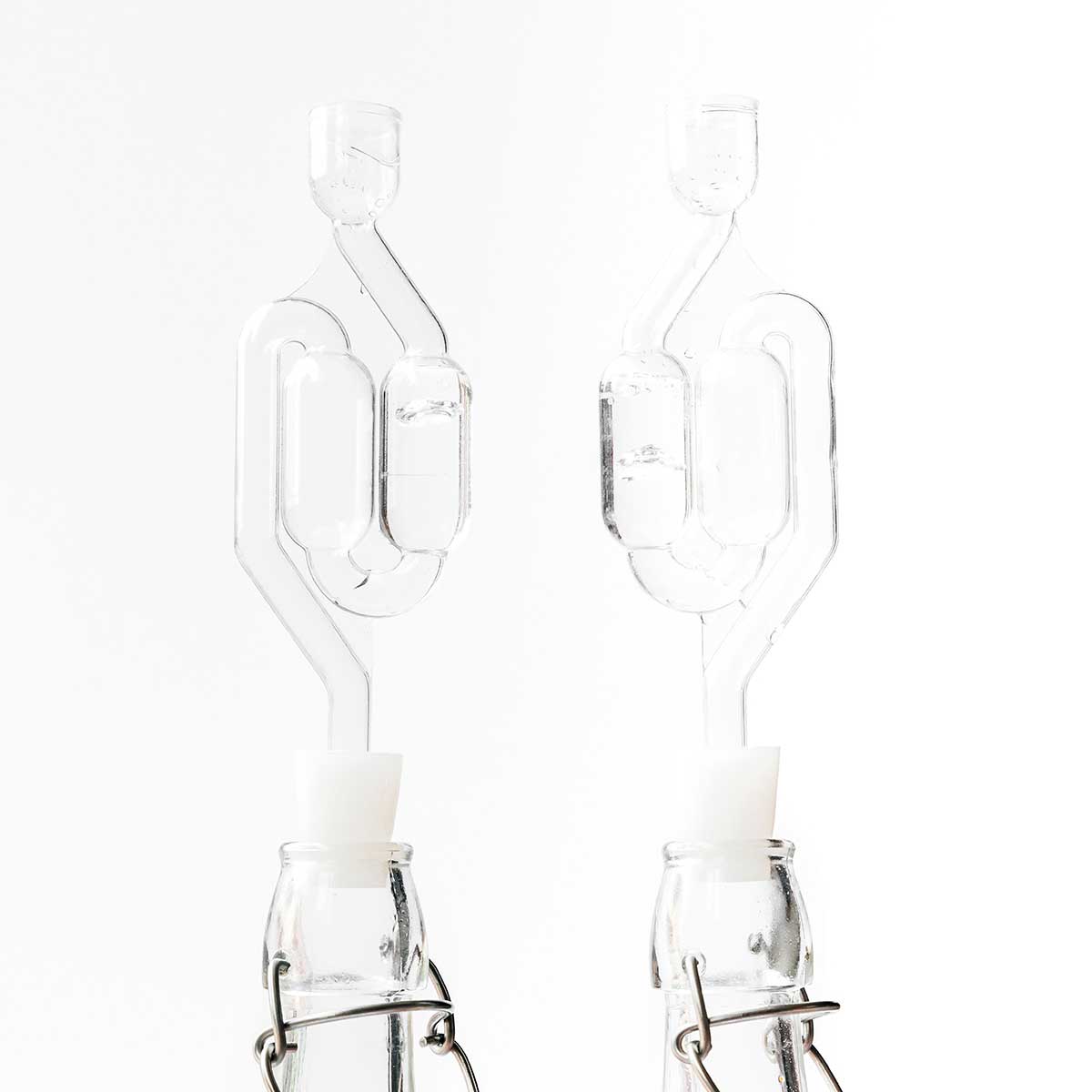
How to make hard kombucha
The process of making hard kombucha is a little different from making traditional kombucha in that we’re adding an extra step in the middle. It goes something like this!
- 1st Fermentation: Make the kombucha (6 to 10 days). This is when you turn sweet tea into kombucha!
- 2nd Fermentation: Make it boozy by adding yeast and sugar, then let alcohol develop (7 to 14 days)
- 3rd Fermentation (optional): Add flavors and seal shut to carbonate (3 to 10 days)
Easy enough, right? Let’s dig into the details!
1st Fermentation: Make the kombucha
In the first step, you’re making kombucha just as usual. You’ll just put sweetened tea, starter kombucha, and a SCOBY (symbiotic culture of bacteria and yeast) into a large jar and let it ferment for 6 to 10 days until you reach your desired flavor (a mix of sweet and tart). Get instructions for the first fermentation here.
2nd Fermentation: Make it Boozy
In the second step, we’ll add a slurry of yeast, sugar, and water, which will increase the alcohol content of your brew. You’ll need:
- 1 cup hot water
- 1 cup white sugar
- 1 tsp yeast (champagne or ale yeast, see notes above)
- 1 gallon of kombucha (from first fermentation)
- Airlocks
1. Yeast Slurry: Stir together the hot water and sugar until sugar is dissolved. Let it cool to lukewarm, then stir in yeast. Allow the yeast to activate for 5 minutes, until bubbles form and the yeast is frothy.
2. Bottle: Meanwhile, transfer kombucha to bottles or a growler (or any vessel with an opening that will fit your airlocks. Portion yeast slurry equally into each bottle of kombucha.
3. Airlock: Fill airlocks with water (to the designated line – you may need to read the instructions for your particular airlocks). Place airlocks onto each bottle.
4. Ferment: Set bottles somewhere dark and room temperature, and let ferment for 7 to 14 days. It’s ready when the flavor is somewhat dry and boozy! If you’re not moving on to the next step (adding flavor), seal the bottles shut and transfer to the fridge to stop the fermentation process.
“I’ve made it and it’s WONDERFUL!
I was wondering what you needed to do to raise the alcohol content. More Yeast? More sugar?”
3rd FERMENTATION: Add flavor
In this final (and optional) step, you can add flavors to give your hard kombucha a fun taste. This is the equivalent of the “second fermentation” in traditional kombucha brewing. You’ll just add whatever flavors you want to your bottle (like pureed fruit, fruit juice, ginger, herbs, or spices), then seal it shut. Let sit for 3 to 10 days, until bubbly and carbonated. Transfer bottles to the fridge to stop the fermentation process. Check out all of our flavor recipes here!
How much alcohol is in my hard kombucha?
The amount of alcohol in your finished hard kombucha will depend on how much sugar you added in the 2nd fermentation. Typically each 1 cup of sugar will give you about 4% ABV. Increasing this ratio and adding more sugar will result in a higher alcohol level.
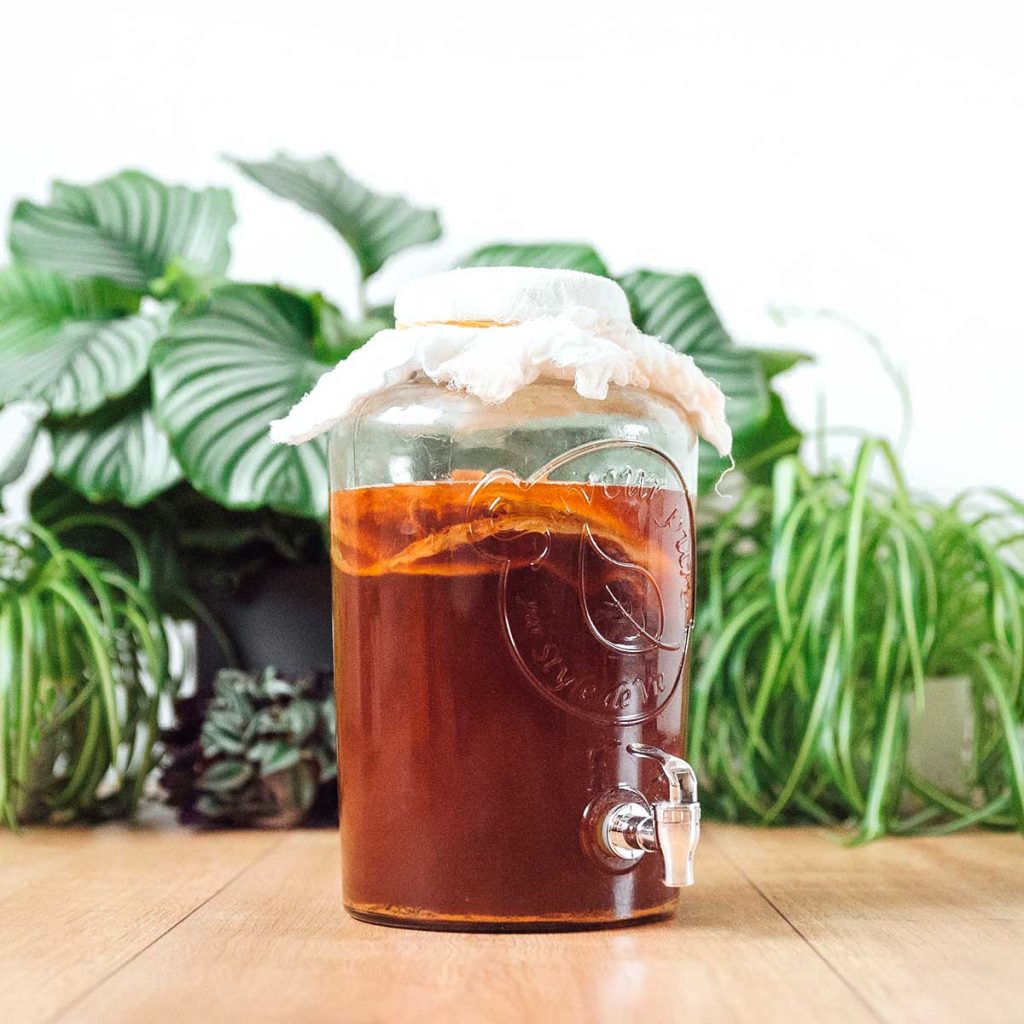

How To Make Hard Kombucha
Ingredients
- 1 cup hot water
- 1 cup white sugar
- 1 tsp champagne or ale yeast
- 1 gallon unflavored kombucha, from a first fermentation
Instructions
- Yeast Slurry: Stir together the hot water and sugar until sugar is dissolved. Let it cool to lukewarm, then stir in yeast. Allow the yeast to activate for 5 minutes, until bubbles form and the yeast is frothy.
- Bottle: Meanwhile, transfer kombucha to bottles or a growler (or any vessel with an opening that will fit your airlocks. Portion yeast slurry equally into each bottle of kombucha.
- Airlock: Fill airlocks with water (to the designated line – you may need to read the instructions for your particular airlocks). Place airlocks onto each bottle.
- Ferment: Set bottles somewhere dark and room temperature, and let ferment for 7 to 14 days. It’s ready when the flavor is somewhat dry and boozy! If you’re not moving on to the next step (adding flavor), seal the bottles shut and transfer to the fridge to stop the fermentation process.
- Flavor (optional): At this point you can flavor your bottles however you want! See our favorite kombucha flavors here.
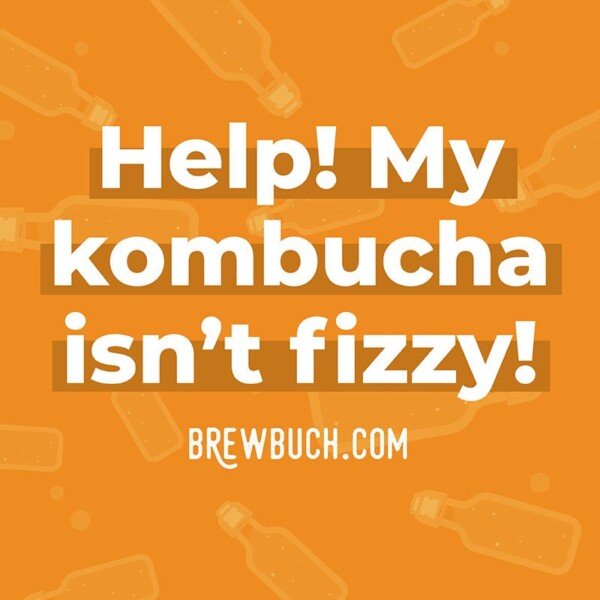
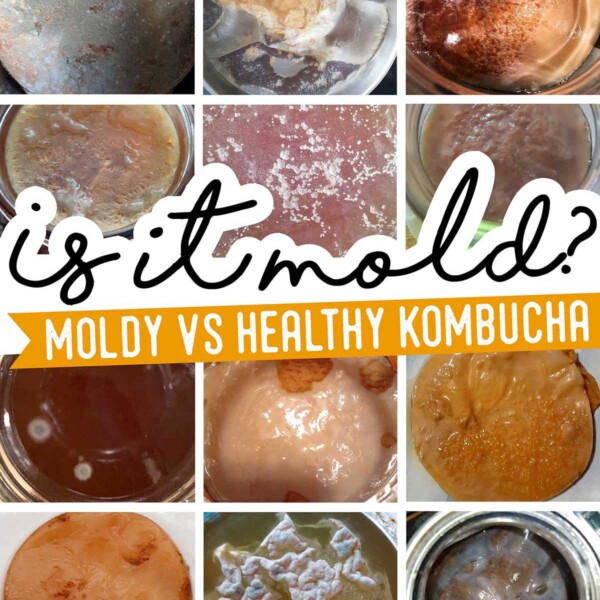

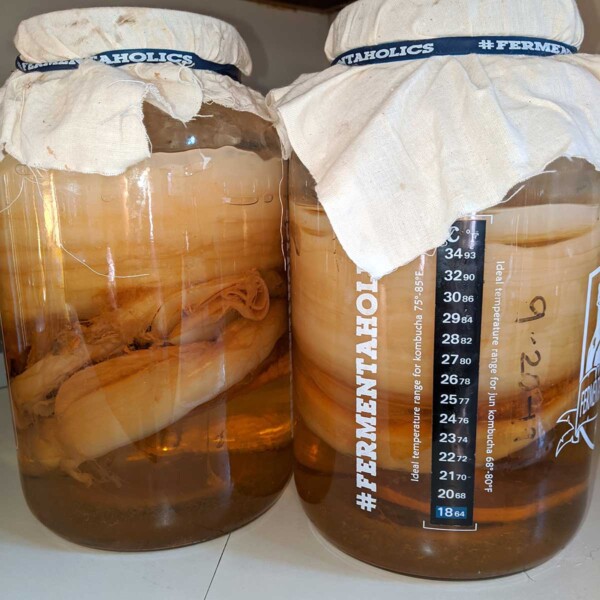
My 2nd batch of hard kombucha tastes really yeasty. What did I do wrong, the first batch was delicious, I used your raspberry zinger recipe.
It could have just over fermented a bit? Try letting it ferment for a little less time next batch!
I started two jars of kombucha (w/ champagne yeast slurry) 20 days ago and only one of them is cloudy and bubbly. The other one looks like regular kombucha. I dumped half the contents of the slurry into one jar and the rest in the other. Could it be that most of the yeast ended up in only one jar, so the 2nd jar will not have much extra alcohol?
That’s definitely possible! If one has more champagne yeast it’s going to have more activity / alcohol.
Hi! Thanks for the info. I am a baker so am familiar with that yeast process. I am having trouble getting my champagne yeast to foam, but perhaps I am just thinking about what baking yeast would look like and my expectations for proofing are too high? I am now on my fourth try. Whatever happens this time is going in and we’ll just see. LOL I am at a low altitude. I let the sugar mixture cool to around 98 F. Any thoughts on this would be appreciated! Thank you!
It won’t look quite like bakers yeast – just look for SOME activity 😀
Your info is fabulous. Thanks……I made my first Champaign Batch…..Did all 3 Fermentation s. I did not taste or feel any Alcohol in the end product. It actually was rather thick in texture. I did the yeast in the slurry but it did not activate. It remained like little beads and never seemed to dissolve. I used the product you suggested. Could it be Old? It came from Canada could this be why there was not any alcohol in it? Or some other reason.
Your response is appreciated. On my second batch I will try to leave the 2F longer………
It could have been old or dead somehow! You’ll want to make sure that yeast slurry is alive and bubbling before using it next time 😀
After several years, I am ready to try making hard kombucha. One question. On the second fermentation process when I add the champagne yeast do I leave the Scoby out or leave it in?
Leave the SCOBY out of this step 😀
Hi Sara: (1) Thanks for having such a helpful website with easy to follow instructions!
(2) I am trying to make kombucha and also hard kombucha with as little sugar present at the end. I am getting super mixed info on the Internet about whether a refractometer will work to accurately measure the sugar content of either the non alc or alcoholic kombucha. Where do you land on this debate? And if the refractometer doesn’t work, how else could one measure the sugar content?
Thanks!
I land on the side of…it probably won’t be very accurate. I would just use your tastebuds instead! When it’s pretty tart, most of the sugar should be out (you can use store bought bottles for a taste reference – their nutrition info will be correct because they send it off to labs for sugar analysis).
I want to make kombucha with minimum alcohol, as I want to start making it commercially but as I am starting I will be fermenting in rented commercial kitchen. Can you help me with the process which makes sure it produces minimal alcohol.
thank
Here’s our article about the naturally occurring alcohol in kombucha. Really the only way to get less alcohol is to let it ferment for less time!
very nice
Ok, thank you! Does the ginger make it more susceptible to mold?? If the first batch goes ok, is she in the clear regarding starting with gingerade? Seeing your response, she’s concerned that all subsequent batches may be MORE susceptible to mold because she started with that…is that true? Thanks for the help!
I would think if it survives the first batch made with gingerade, all subsequent batches will get less and less apt to mold (as you ferment the ginger out).
Ok. Thanks! Quick question….just gave my sis some scobies and taught hear how to get started. She couldn’t find any original GT’s ANYWHERE, and ended up using the GT’s Gingerade for the starter (I couldn’t fly with several cups of my starter). Will it work….or will the ginger inhibit it???
Thanks for the help!
It may work, just tell her to keep a good eye out for mold!